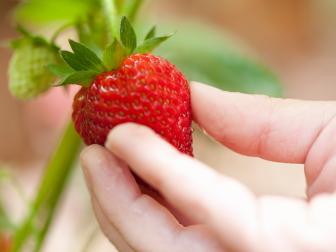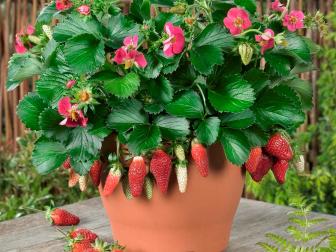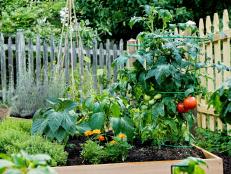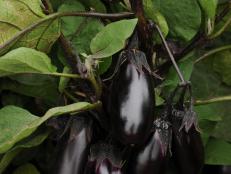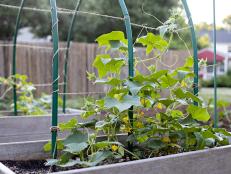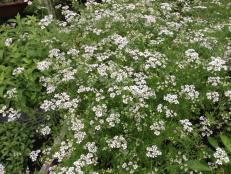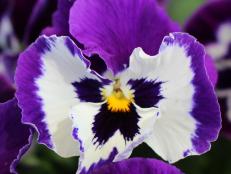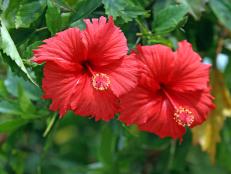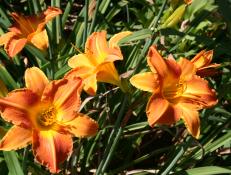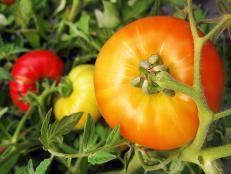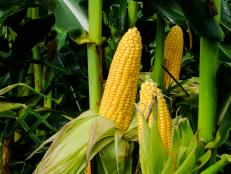Companion Planting for Strawberries
Learn what to grow alongside your strawberry plants to increase your harvest and avoid common pests and diseases.

Sweet, ripe strawberries fresh from the garden are one of the hallmarks of summer. If you've tried growing your own, you may have run into some common problems like small or misshapen fruit, or plants that don't set fruit at all. It’s even worse when a plant is plagued by pests. To help, try companion planting for your strawberries, which can improve harvests and discourage pests and diseases.
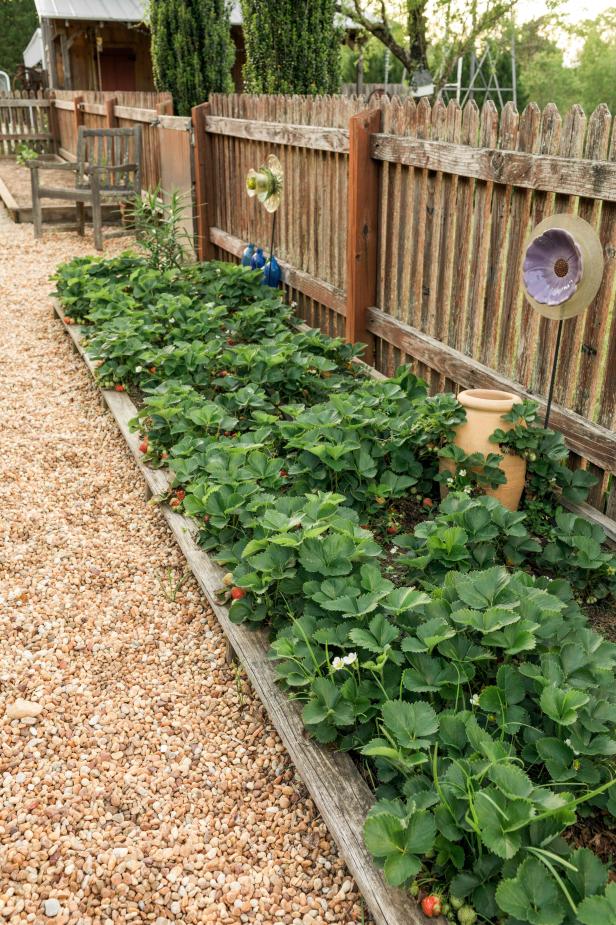
Flynnside Out
In this community garden, a bed full of strawberries is kept safe from deer and rabbits thanks to a picket fence.
What is Companion Planting?
There are certain herb and vegetable plants that, when grown next to and among strawberries, can have a variety of benefits.
“Insectary” plants have flower power that attracts pollinating insects to the garden. More visits from pollinators will increase the number of fruits each strawberry plant produces, and the strawberry fruit may also develop a fuller shape with fewer incidences of irregularly formed fruits (also known as “catfacing”).
Companion plants can also deter some common strawberry pests. “Banker” plants provide food and habitat for predators of garden pests.
Some companion plants even have repellent properties that discourage garden pests. “Trap” plants are more attractive to pests than the desired crop. Making room in the garden for a trap crop may entice pests away from the strawberry plants.
Strawberry Companions
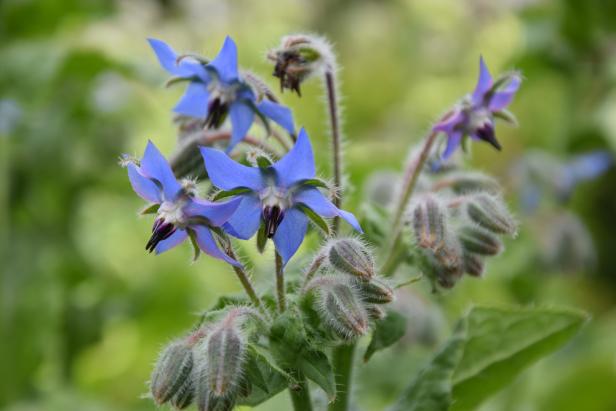
Shutterstock/rdp15
Borage is a beautiful herb with a cucumber-like scent and flavor. It self-sows readily and can spread easily in some gardens. Bees absolutely love borage!
- Blue borage (Borago officinalis) increases visits from pollinating flies and possibly bumblebees, which, in turn, leads to larger yields of more developed fruit.
- Alfalfa is a trap crop for Lygus bugs, which feed on and damage developing strawberry fruits. Plant a small patch of alfalfa near the strawberries to entice Lygus bugs away from the berries.
- Plants in the Amaryllidaceae family — such as onion, garlic, and chive — discourage many pests that plague strawberries including the two-spotted spider mite.
- Other aromatic herbs, like fennel and cilantro, may also have pest repellent benefits.
Bad Neighbors for Strawberries
Common vegetable crops — including tomatoes, potatoes, peppers, eggplants, melons and plants in the rose family — can introduce the fungi responsible for Verticillium wilt. Potatoes, tomatoes, eggplant and red clover can harbor species of nematodes that can feed on strawberries. Plant your strawberries in an area where those crops have not recently been cultivated.
Tips for Growing Strawberries

Ball Horticultural Company
Plants that grow in the wrong environment get stressed out, which can make them more susceptible to pests and diseases. Grow strawberries in their ideal conditions to keep them happy, healthy and productive.
The first step in maintaining a healthy strawberry patch is to make sure that strawberries are planted at the correct depth. Avoid burying the “crown” of the plant where the roots meet the shoots. On the other hand, strawberries don’t thrive in a shallow planting either. Look for the spot where the new leaves emerge from the stem, and make sure that spot is above the soil line.
Strawberry plants spread quickly by stolons or “runners," which are stems that run along the ground that produce new plants along its nodes. Strawberry runners will fill a space in no time, so make sure that each plant has room to grow. Strawberry plants should be spaced about 12 inches apart, depending on the variety and planting layout.
Strawberries like to grow in moist but well-drained soil. Amend sandy or heavy clay soils with organic matter before planting. Adding compost is a great way to improve water holding capacity of sandy soils and drainage in clay. Another option is to grow strawberry plants in a raised bed or container.
When can you expect your first strawberry harvest?
That depends on the plant. Strawberries have different day length requirements that must be met before they are able to set the flower buds that will later develop into fruit.
- June bearing strawberries produce one heavy berry crop in early summer.
- Double cropping (or “everbearing”) strawberries set fruit in the spring and again later in the summer.
- Day neutral strawberries set flower buds and fruit throughout the summer, although they may have two main crops like double cropping strawberries.
Strawberry Gardening 101
How to Grow Strawberries
Here’s what you need to know to plant strawberries and grow summer’s juiciest, sweetest fruit.
Popular Strawberries to Grow 7 Photos
Growing strawberries? Try these sweet varieties.
Tips for Crop Rotation
Strawberries are grown as a perennial crop in many areas of the country. Even so, it’s a good idea to rejuvenate a planting every three or four years by lifting and dividing plants and even re-planting in a new spot. If you do choose to add strawberries to your crop rotation plan, avoid planting in areas where other members of the rose family, tomato family crops and red clover have been grown.






